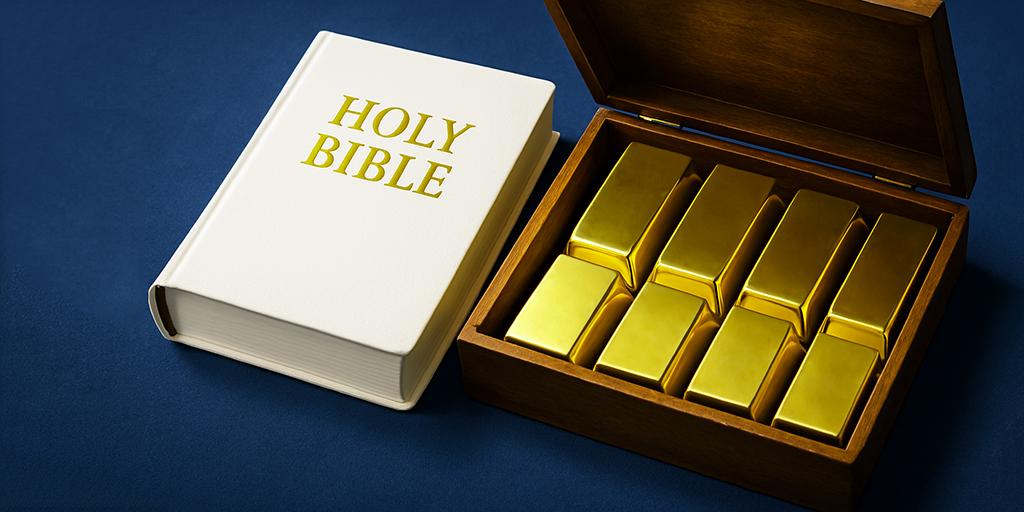
The Bible’s Gold Hard Facts
What does the Bible say about gold? Is this treasured metal a symbol of spiritual significance? If so, what can we learn from it?
The Bible mentions gold from Genesis to Revelation, and its very first reference associates gold with glory and excellence. Genesis 2:11–12 mentions “the whole land of Havilah, where there is gold. And the gold of that land is good.” According to the Brown-Driver-Briggs Lexicon, the Hebrew word translated “good” also means “excellent (of its kind), rich, better.” Near the end of the Bible, in Revelation 21, John receives the vision of the New Jerusalem coming down from Heaven. The Apostle John describes the city as “pure gold, like transparent glass” (vv. 18, 21). Imagine the magnificent beauty and opulence!
Gold is mentioned over 400 times in the Bible. It was used extensively in the construction of the tabernacle, its priestly equipment (dishes, pans, pitchers, bowls, and lampstands), and even the high priest’s apparel (Exodus 25–28). When Solomon built the temple and its furnishings, he used gold even more extensively (1 Kings 6–7).
For millennia, gold was prized as a precious metal for currency, jewelry, art, and the decoration of temples and palaces. Today, various manufacturing processes use gold due to its unique properties of corrosion resistance, malleability, conductivity, and brilliant beauty. Abraham was blessed with gold, as was Solomon (Genesis 13:2; 2 Chronicles 9:13). King Solomon’s drinking vessels were gold (2 Chronicles 9:20). But God had warned that a king should not “multiply wives for himself, lest his heart turn away; nor shall he greatly multiply silver and gold for himself” (Deuteronomy 17:17)—instruction Solomon failed to heed.
The Bible uses gold as a symbol representing significant qualities or attributes in both the Old and New Testaments. Gold is nearly incorruptible, so it symbolizes purity and holiness. The gold in the tabernacle and temple represented the presence of God and symbolized God’s throne in Heaven.
Gold has been a symbol of power and authority throughout history, and it still is today. Kings often wore crowns and scepters made of gold. In the vision of Christ in Revelation 14, He is wearing a golden crown.
Ancient pagan religions used gold idols to honor their gods in religious ceremonies and rituals. The God of the Bible instructed Israel not to make gods of gold (Exodus 20:4–6, 23). Israel failed to heed God’s instruction when, more than once, they made golden calves to be their gods (Exodus 32; 1 Kings 12:28–30).
Gold symbolizes purity, which comes from the process by which it is refined. Extreme heat melts gold ore in a crucible to remove impurities from the gold. More than once, Scripture uses this process of gold refinement as an analogy for the refinement or purifying of our character. The Apostle Peter says that Christians experience trials “that the genuineness of your faith, being much more precious than gold that perishes, though it is tested by fire, may be found to praise, honor, and glory at the revelation of Jesus Christ” (1 Peter 1:6–7). The patriarch Job anticipated that, by following God’s ways, his character might be found “as gold” (Job 23:10).
Gold is also used to symbolize something of immense value—though there are, of course, things of more value than gold. David said that God’s law, testimony, statutes, and commandments are more to be desired than gold (Psalm 19:7–10). Psalm 119:72 and 119:127 agree, as do Proverbs 3:14, 8:10, 8:19, and 16:16.
The Apostle Paul describes Christians as “God’s building”—His temple, built on the foundation laid by Jesus Christ. Christians are to build godly character on that foundation carefully, with attributes symbolized by “gold, silver, [and] precious stones,” which will survive the fire that will test each one’s work (1 Corinthians 3:9–16).
This is truly life’s purpose, but there is even more in store for those who understand. To learn more, read the Tomorrow’s World article “The Meaning of Life.”
Stay up to date with our Weekly Digest Email!
Tomorrow's World ComMentary Podcast
Subscribe to Tomorrow's World Commentary podcasts on iTunes and Google Play!



